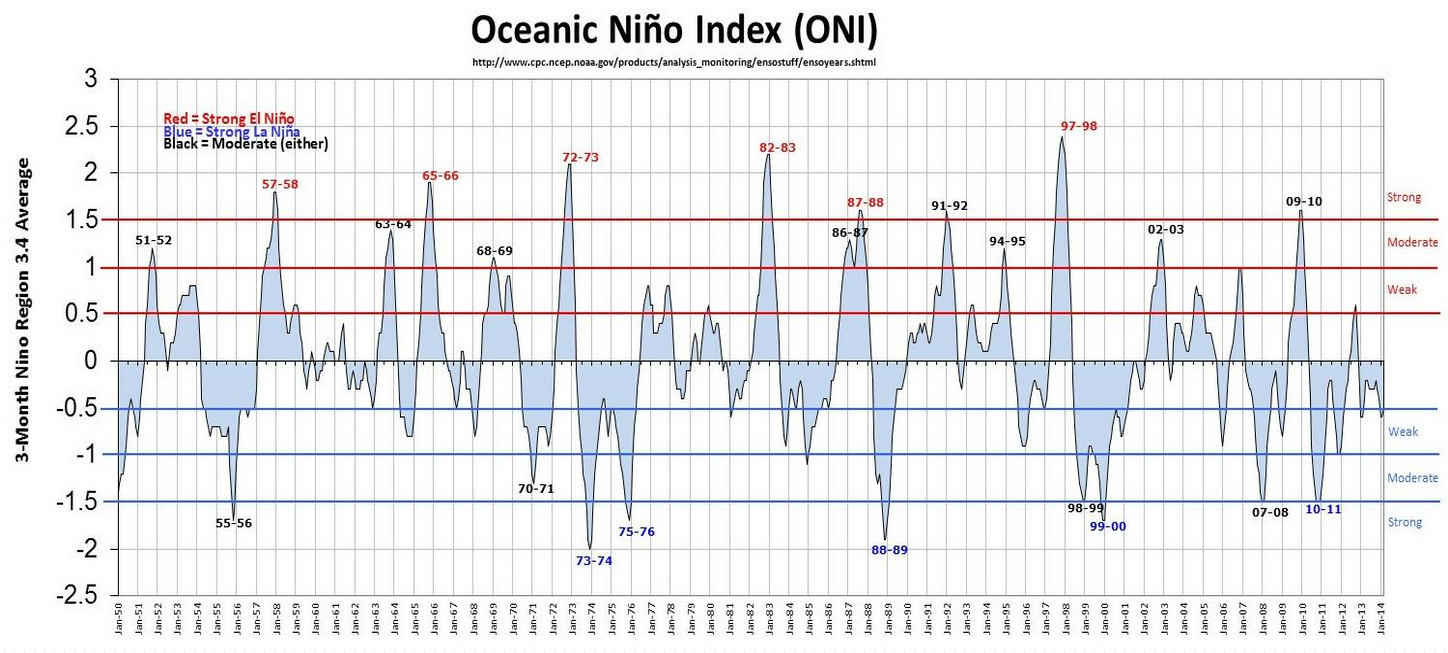The El Niño weather pattern looks all but set to be confirmed later this year. Meteorologists are giving it a 60-80% chance of the current warming in the eastern Pacific to result in a full blown El Niño event. The weather anomaly wreaks havoc with regular weather patterns and can impact currencies like the AUD or NZD as inflation could lead to higher interest rates.
El Niño is a global climate event characterised by a warming of the Pacific Ocean off the coast of South America. During El Niño events, the trade winds weaken, leading to a rise in sea surface temperature in the eastern equatorial Pacific and a reduction of "up–welling" off South America. This creates excessive flooding and rainfall in the Eastern Pacific and drought in the Western Pacific.
1997-98 was one of the strongest El Niño years on record, with 2009-10 being considered ‘moderate’. The El Niño weather pattern is not generally confirmed until September, when certain temperature patterns confirm the trend; however, this year already sees comparable temperatures to 1997, so this year could be considered a strong El Niño event. If that happens, New Zealand and Australia could feel the economic pain and their currencies could suffer considerably.

New Zealand
During El Niño, New Zealand tends to experience stronger or more frequent winds from the west in summer, typically leading to drought in east coast areas and more rain in the west. In winter, the winds tend to be more from the south, bringing colder conditions to both the land and the surrounding ocean.
New Zealand and the NZD are heavily reliant on agriculture, dairy in particular. The effects of El Niño are not beneficial to dairy or sheep farming and this will no doubt have an effect on the New Zealand’s trade balance.In 1997 and 1998, theEl Niño event was considered the strongest on record and caused widespread droughts throughout the country, costing farmers hundreds of millions of dollars.
The flip side to the adverse trade balance figures is the inflationary pressures that increased food prices bring. New Zealand is the largest exporter of dairy in the world, and a drop in supply will push prices up. The price of milk and cheese will go up for the average Kiwi which will impact the NZ CPI. The RBNZ may respond to these inflationary pressures by increasing interest rates which will push the exchange rate up.
Australia
The east coast of Australia will see drought conditions if El Niño is confirmed. The majority of food produced in Australia comes from Victoria, New South Wales and Queensland, who together produce vast amounts ofwheat, beef, sheep, bananas, cotton, citrus fruit, grain, wine, etc.On average, Australia produces 20.55m tonnes of wheat worth A$6.5b, of which 50% comes from these three states. The El Niño event in 2006 saw a significant drop in Australia’s wheat crop, which contributed to global food prices hitting a record high in 2008. Australia is the second largest beef exporter in the world behind Brazil with exports earning A$4.8b per year. A drought could significantly affect the amount of beef exported.
Australia will face the same fate as New Zealand when it comes to inflation. A drought and subsequent reduced output of food will cause price rises in Australian supermarkets. The RBA may respond by increasing interest rates to slow inflation.
Droughts and floods are the results of an El Niño weather event. This year is looking very likely to turn out to be an El Niño year which will impact the trade balances of New Zealand and Australia and could send their currencies to higher levels as interest rates rise in response to food prices.
